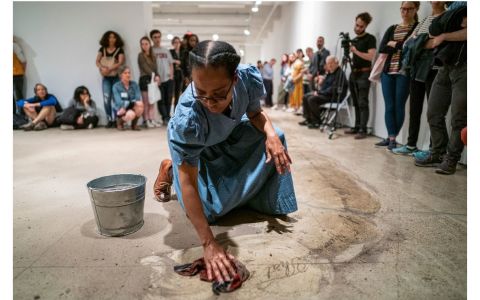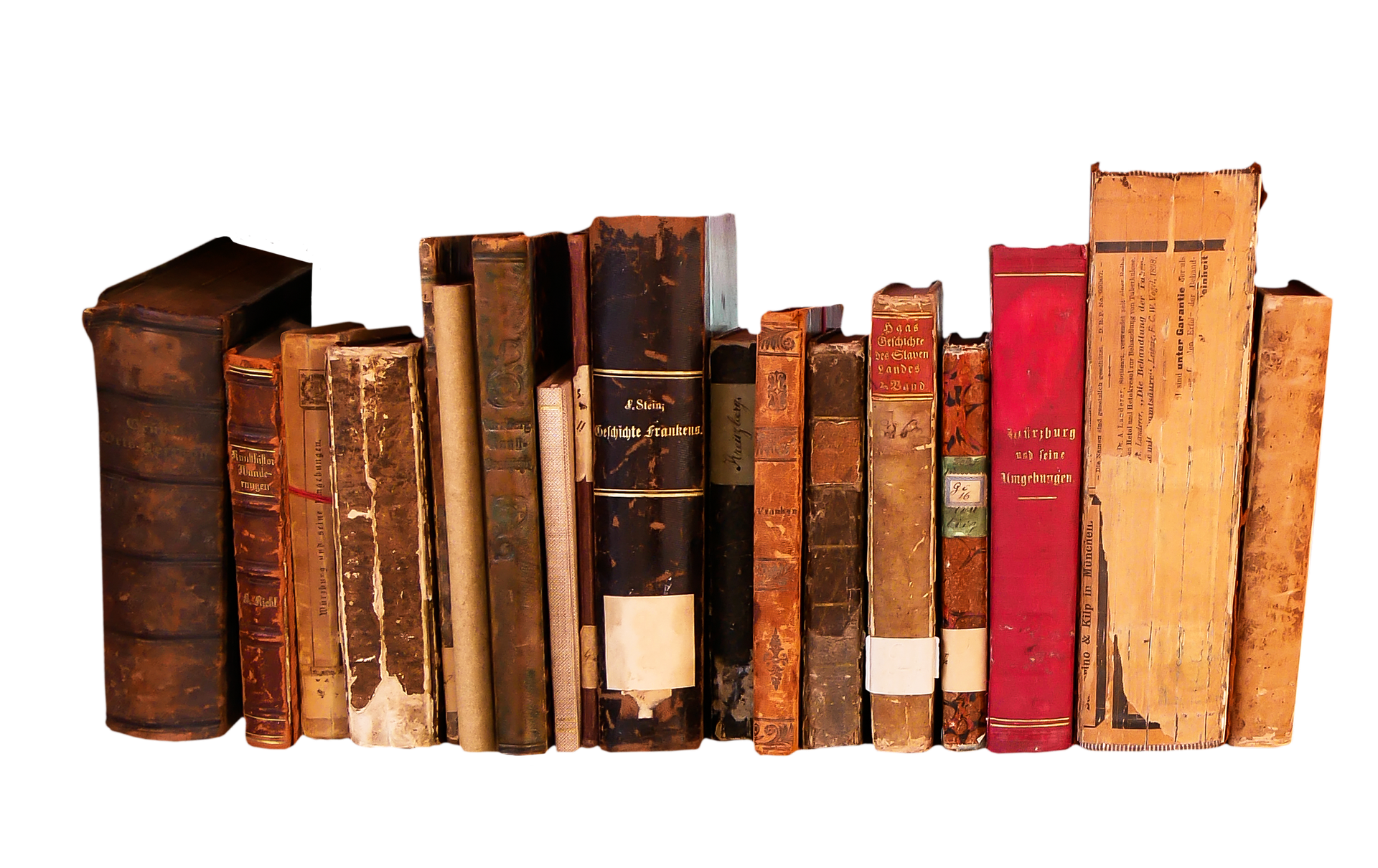
The artist Sonya Clark performs, mopping up dust with a dish towel printed with an image of the Confederate battle flag. The dust, on a section of the Declaration of Independence inscribed on the concrete floor, came from historic sites in Philadelphia. Jessica Kourkounis for The New York Times
PHILADELPHIA — In a second-floor gallery at the Fabric Workshop and Museum here on Saturday, a woman used a dish towel printed with an image of the Confederate battle flag to clean a layer of dust from a section of the Declaration of Independence inscribed on the concrete floor.
The artist Sonya Clark repeatedly dipped the cloth in a metal bucket of water before using slow, circular motions to wash away the dust, revealing 111 words from the Declaration’s preamble, beginning: “We hold these truths to be self-evident.”
The silent, 20-minute performance accompanied the opening of Ms. Clark’s exhibition titled “Monumental Cloth, the Flag We Should Know,” in which she highlights the little-known Confederate Flag of Truce, a dish towel used by Confederate forces to surrender the Civil War at Appomattox, Virginia, on April 9, 1865.
A huge linen replica of the truce flag, measuring 15 feet by 30 feet, or 10 times the size of the original, has been woven by the museum, and sits in a separate gallery on the eighth floor, near 100 smaller versions of the flag, all woven to scale.
Ms. Clark, a professor of art and art history at Amherst College in Massachusetts, is presenting the truce flag as a counterweight to the familiar red and blue battle flag of the Confederacy that is commercially reproduced on merchandise including T-shirts, bumper stickers, and dish towels, and is seen by its critics as a symbol of racism.

That the truce flag — now housed at the Smithsonian Institution in Washington, D.C. — is overshadowed in popular culture by the battle flag is, Ms. Clark argued, a sign that America has yet to erase a racist past that sparked the Civil War.
“This country has not reckoned with the fact that the Civil War was lost, that we haven’t quite come to terms with when that truce was made,” she said in an interview after the performance. “It meant that people put down their arms but they didn’t actually attend in full to what the war was being fought about.”
By giving new prominence to the truce flag through its scale and number at the exhibition, Ms. Clark is hoping that people will accept it as the symbol of reconciliation that it was meant to be, in contrast to the battle flag that opponents see as an emblem of division and defiance.
Susan Lubowsky Talbott, executive director of the museum, said the exhibition is especially relevant at a time of renewed white nationalist activity, like the rally in Charlottesville, Va., in August 2017, where a counterprotester was killed.



“It’s so important right now that sadly, the timing for this show couldn’t be better,” Ms. Talbott said. Recognition of the Confederacy is widespread. The Southern Poverty Law Center reported in 2019 that 114 Confederate symbols have been removed since the Charleston, S.C., attack — and that 1,747 still stand. Many of these monuments are protected by state laws in the former Confederate states.
Kate Masur, an associate professor of history at Northwestern University, said that drawing attention to the truce flag has the potential to shift public perceptions about the end of the Civil War that are now dominated by the battle flag.
“She’s trying to help people imagine what it would have been like if that truce flag had become the flag we all remembered as the Confederate flag,” Ms. Masur said. “What would be all of the cascading effects if the main Confederate flag that was passed down to us from history was a white flag of truce or a flag of surrender, maybe our history would have turned out very differently. It’s a great idea for an artistic project.”
The battle flag’s associations with white supremacy and no-surrender aren’t likely to be dislodged among its adherents, Ms. Masur said, but people who attend the exhibition may come away with a new perspective. “Will it make people who engage with her exhibit think differently about American history? It certainly could,” she said.
The huge truce flag was created in three sections by a commercial weaver in Pennsylvania, and stitched together, Ms. Talbott said. The weaver didn’t have the ability to incorporate three red lines from the original flag, so the lines were handwoven by museum staff after researching dyes that would have been available at the end of the Civil War.
Ms. Clark, 52, declined to say whether her use of a cloth printed with the battle flag to clean the gallery floor was an act of provocation, simply noting that the cloth was commercially available. “They are everywhere,” she said. (The dust on the gallery floor came from two historic Philadelphia sites, Independence Hall, and the Declaration House, where Thomas Jefferson drafted the Declaration of Independence.) “As a woman of color,” she said, “I’m embodying the idea of the domestic worker who is a whole living human being.”
Brittany Webb, a curator at the nearby Pennsylvania Academy of the Fine Arts, called Ms. Clark’s performance, titled ‘‘Reversals,’’ a provocative and patriotic act that sought to highlight divisions between the battle flag and the founding principles of the Declaration.
“Somebody is using a battle flag to clear away the historical debris to remind everyone that this is an ideal that is supposed to be important to us all,” Ms. Webb said.
“There’s something heavy about the materiality of watching that dirty flag get squeezed out into the bucket over and over again,” she said, “literally wiping away the historical dust off a phrase that is supposed to be fundamental, part of the philosophy of the founding of this nation.”
–nytimes.com



